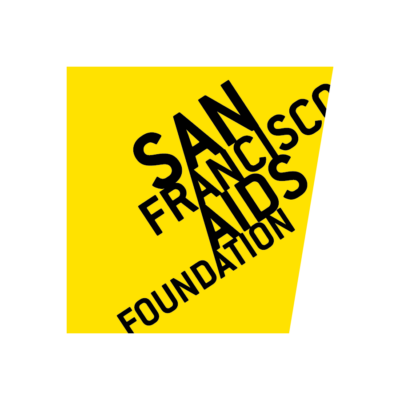The View from Here: Dr. Michael Gottlieb & Dr. Paul Volberding
2011 marks the 30th year of AIDS. “The View from Here” is a special year-long series to mark the anniversary. Advocates, doctors, researchers, politicians, philanthropists, educators, public health professionals, journalists and celebrities are answering the same set of questions each month.
This month, we feature two of the world’s leading HIV/AIDS physicians: Dr. Michael Gottlieb, who authored the first report to the CDC in 1981 identifying virus that would be known as AIDS, and Dr. Paul Volberding, who started the nation’s first program dedicated to treating HIV at San Francisco General Hospital.
We’ve learned a lot in 30 years. What do we have yet to learn?
Gottlieb: The most obvious missing piece of information is how to make an HIV vaccine that works. We know more about HIV and its inner workings than any virus in history, yet an effective vaccine has eluded us. Nevertheless the extent of the knowledge gained in a comparatively short time is encouraging. We can help by continuing to advocate for funding HIV vaccine research because of the urgent need. The hopes of millions of people for lives free of HIV are at stake.
Volberding: We have learned an immense amount when you think of starting from absolute zero, and the changes in outcomes are completely gratifying. I think the challenges are making sure that, in this country, we help everyone with HIV infection learn their status, be diagnosed, remove any barriers to care that we can, and ensure that patients have continuous access to expert care, testing, and medicines. Each of those is necessary to the best outcomes and that’s still going to be a challenge for us.
Gottlieb: Major questions about treatment remain open including our incomplete understanding of long-term complications due to ongoing inflammation, metabolic disturbances such as body fat redistribution, and more effective ways to promote adherence to medication regimens.
Volberding: Internationally, the issue is the sustainability and expansion of the current ARV and other programs. Given the economy, I think there’s a huge threat that those will be limited and that we’ll see increasing mortality from the epidemic. So the issues for us, whether domestically or globally, are finding people with infection and bringing them into care.
Gottlieb: More problematic is the question of how to remove the intense social stigma that is still associated with HIV everywhere in the world even after three decades. Many people with HIV are still compelled to hide their status for fear of repercussions in the workplace or with family and friends. We also have to figure out how to be more creative in addressing discrimination generally, and human rights abuses everywhere which interfere with an effective response to the epidemic.
Volberding: The efforts at prevention have to continue and be strengthened. Disparities have to be addressed. And ultimately a vaccine is hugely necessary to limit the epidemic. So the research front still needs an infusion of support.
What was your deciding moment, when HIV/AIDS became an important issue in your life?
Volberding: I saw my first Kaposi’s Sarcoma patient on my first day at San Francisco General Hospital on July 1st, 1981. He was a striking patient, and I knew so little about the disease. That was before there were any publications whatsoever about Kaposi’s. So really from day one, literally day one, I was hooked.
Gottlieb: It was in 1981 when I saw the first patients that we reported in the CDC’s Morbidity and Mortality Weekly Report. I remember those four men more vividly than patients I saw yesterday. I saw the worry on their faces and witnessed their courage and patience as they realized that we had no idea of what their illness was or how to treat it. I knew right away that I would be in it for the long run.
Volberding: There were many important moments along the way, but I think the way that our community came together was an amazing thing to be a part of. In the early days of the epidemic it was critically helpful how easily everyone came together, how the organization sprung up especially from the gay community, how we in the medical community found it so easy to work with the community organizations. But I still think the vivid memory of my first patient was the real spark for me.
With ever increasing public health issues to contend with, why should anyone still prioritize HIV/AIDS?
Gottlieb: It is a tragedy that epidemic HIV was allowed to become endemic in this country. An endemic infection is one that is not transient, but rather is present in a population at all times, and HIV looks like it is now a permanent fixture in the landscape of viral diseases in the U.S. We should not forget that the Reagan administration refused to even acknowledge, much less prioritize AIDS, setting back the nation’s response to the epidemic by a decade. By analogy, those today who would not prioritize funding for an ongoing vigorous response, condemn thousands to lives complicated by HIV.
Volberding: HIV in many ways is a less-compelling problem, either from the patient’s perspective or the physician’s, because it’s correctly identified as a chronic disease. It’s certainly less frightening than it was, and because patients with HIV infection don’t have to be physically identified the way they did with Kaposi’s or the side effects of the drugs, I think it’s understandable that it’s fallen somewhat off the front burner. I think the challenge though is that this remains an infectious endemic disease, and we know without continued attention more people will become infected. So the challenge is, while understanding that it’s less in the public eye than it was, to argue that it still deserves broad public attention.
Gottlieb: I remain an unapologetic proponent of “HIV/AIDS exceptionalism.” The populations disproportionately affected are unique and frequently marginalized, and will be underserved or neglected by an approach that lumps HIV/AIDS in the context of general health services. In my opinion the trend toward “mainstreaming” of services especially in these times of budget cutbacks will jeopardize the already thin safety net that limits the harm caused by HIV.
What keeps you up at night?
Gottlieb: New HIV infections in men aged 30-60. In the last six months I diagnosed acute HIV in at least four patients who had managed to avoid it for many years. While today’s medications offer patients the promise of long survival, it is at the cost of a lifetime requirement to take daily medication and worry about the long-term toxicities of both the drugs and the virus itself. As a result of better treatment there are many people today with HIV who live highly productive and happy lives, however I don’t know too many who would not want to turn back the clock to a time before HIV.
Volberding: Watching the epidemic here, thinking about the disparities, thinking about how to bring people into care, those are huge issues. But at the same time, thinking about the aging nature of the patients that we’re caring for. There’s been a lot of talk and a lot of research programs beginning about HIV and aging, and the effect of chronic inflammation on aspects of our patients’ health. Even if HIV doesn’t accelerate aging, we’re still going to have a larger number of people who are becoming elderly with HIV infection. We must make sure we understand how best to care for them, how best to care for the issues of co-morbidities, whether it’s cardiovascular disease or high blood pressure, and how to build a system of care that doesn’t just do HIV care but really whole-patient care.
Gottlieb: Another thing that keeps me up at night is the situation in sub-Saharan Africa and other developing regions, where every day thousands of people die of AIDS for lack of access to treatment. To paraphrase Bono “the fact that 15,000 die every day of AIDS, malaria, and TB is Africa’s problem. That it is not a recurrent story on our nightly news is our problem.” In a speech in 1989 the late Dr. Jonathan Mann said “against AIDS we will prevail together, for we will refuse to be split, or to cast into the shadows those persons, groups and nations that are affected.”
AIDS activism in the gay community has waned and what remains seems focused only on a return to normalcy (PREP, eradication, etc), overlooking the fact that the epidemic is still raging here at home and around the world, and that many still lack access to even the basic HIV medications.
Three decades into the epidemic, what gives you hope?
Volberding: The potency of the drugs that we have right now are really spectacular. They keep getting more potent, more convenient, and less toxic. I think the direction we see there is really a cause for celebration. No one should want to be infected, on the other hand with this infection we can now control it with the vast majority of people.
Gottlieb: That we came so far in just thirty years in our understanding and treating a previously unknown viral infection of the immune system itself. For perspective it may help to recall that it took nearly fifty years to discover the poliovirus, and that we still lack antiviral therapy for the common cold. The extent of the ongoing international scientific effort working on HIV/AIDS is unprecedented, and I believe it will lead to steady progress and more breakthroughs.
Volberding: I think all of us who’ve worked in this field are optimists by nature. Yet I found myself becoming pessimistic about vaccines. But I think we’re starting to see the glimmers of some hope there as well, so I think that would be the real icing on the cake – to effectively prevent HIV, then I can retire, but not yet.
Gottlieb: I also find hope in how diverse communities at a grass-roots level get it together to address HIV. We first saw this in the 80’s when volunteer organizations like the San Francisco AIDS Foundation, GMHC, and AIDS Project Los Angeles filled the void created by government inaction. Perhaps the most refreshing feature of the biannual International AIDS Conference is the presence of HIV organizations from all over the world. I serve on the board of GAIA, the Global AIDS Interfaith Alliance, (www.thegaia.org), a San Francisco-based NGO that works on HIV/AIDS in the villages of Malawi, Africa. It is heartening to see the progress on HIV that the people of that impoverished country are making with our assistance.










